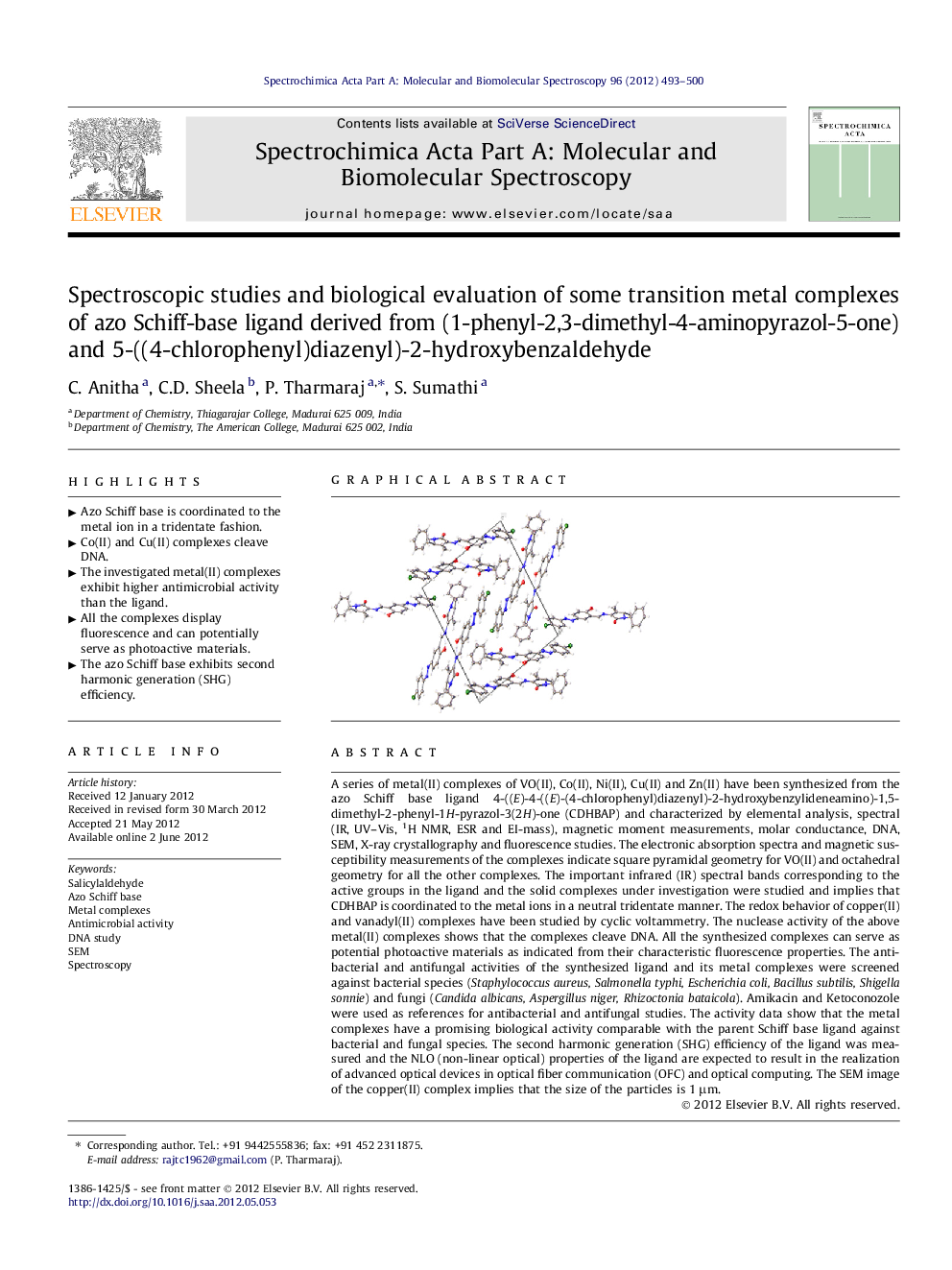| کد مقاله | کد نشریه | سال انتشار | مقاله انگلیسی | نسخه تمام متن |
|---|---|---|---|---|
| 1234435 | 1495272 | 2012 | 8 صفحه PDF | دانلود رایگان |

A series of metal(II) complexes of VO(II), Co(II), Ni(II), Cu(II) and Zn(II) have been synthesized from the azo Schiff base ligand 4-((E)-4-((E)-(4-chlorophenyl)diazenyl)-2-hydroxybenzylideneamino)-1,5-dimethyl-2-phenyl-1H-pyrazol-3(2H)-one (CDHBAP) and characterized by elemental analysis, spectral (IR, UV–Vis, 1H NMR, ESR and EI-mass), magnetic moment measurements, molar conductance, DNA, SEM, X-ray crystallography and fluorescence studies. The electronic absorption spectra and magnetic susceptibility measurements of the complexes indicate square pyramidal geometry for VO(II) and octahedral geometry for all the other complexes. The important infrared (IR) spectral bands corresponding to the active groups in the ligand and the solid complexes under investigation were studied and implies that CDHBAP is coordinated to the metal ions in a neutral tridentate manner. The redox behavior of copper(II) and vanadyl(II) complexes have been studied by cyclic voltammetry. The nuclease activity of the above metal(II) complexes shows that the complexes cleave DNA. All the synthesized complexes can serve as potential photoactive materials as indicated from their characteristic fluorescence properties. The antibacterial and antifungal activities of the synthesized ligand and its metal complexes were screened against bacterial species (Staphylococcus aureus, Salmonella typhi, Escherichia coli, Bacillus subtilis, Shigella sonnie) and fungi (Candida albicans, Aspergillus niger, Rhizoctonia bataicola). Amikacin and Ketoconozole were used as references for antibacterial and antifungal studies. The activity data show that the metal complexes have a promising biological activity comparable with the parent Schiff base ligand against bacterial and fungal species. The second harmonic generation (SHG) efficiency of the ligand was measured and the NLO (non-linear optical) properties of the ligand are expected to result in the realization of advanced optical devices in optical fiber communication (OFC) and optical computing. The SEM image of the copper(II) complex implies that the size of the particles is 1 μm.
Figure optionsDownload as PowerPoint slideHighlights
► Azo Schiff base is coordinated to the metal ion in a tridentate fashion.
► Co(II) and Cu(II) complexes cleave DNA.
► The investigated metal(II) complexes exhibit higher antimicrobial activity than the ligand.
► All the complexes display fluorescence and can potentially serve as photoactive materials.
► The azo Schiff base exhibits second harmonic generation (SHG) efficiency.
Journal: Spectrochimica Acta Part A: Molecular and Biomolecular Spectroscopy - Volume 96, October 2012, Pages 493–500